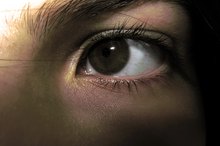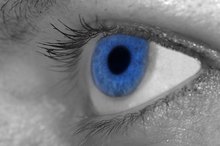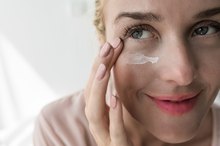What Causes Skin Discoloration Under the Eyes?
You want to put your best face forward everywhere you go, but that is difficult to do when you have dark circles under your eyes. Discoloration of the skin under or around the eyes is a common problem that can be the result of allergies, certain medication use and the normal effects of aging 5.
Allergies
If you suffer from allergies, you may notice changes in the skin coloration around your eyes 5. These can range from dark circles under the eyes, known as "allergic shiners," to scaly, red, thickened skin on the eyelids themselves. The dark appearance comes from your immune system’s response to an irritant in the environment, leading to blood vessel dilation and increased blood flow under the skin. Scaly red skin is usually the result of a long-term allergy.
- If you suffer from allergies, you may notice changes in the skin coloration around your eyes 5.
- The dark appearance comes from your immune system’s response to an irritant in the environment, leading to blood vessel dilation and increased blood flow under the skin.
Skin Aging
How to Remove Milia Under Eyes
Learn More
With aging, the lid skin loses elasticity and droops, creating shadows and a darker appearance around the eyes 5. Fat within the lid, which gives the skin around the eye its supple, youthful shape, thins out over time, giving the eyes a "hollowed out" look 5. This thinning of the skin also makes the blood vessels beneath more visible, contributing to the discolored skin appearance. Sometimes, discoloration under the eyes is hereditary. If this is the case, other family members will share a similar appearance.
- With aging, the lid skin loses elasticity and droops, creating shadows and a darker appearance around the eyes 5.
- This thinning of the skin also makes the blood vessels beneath more visible, contributing to the discolored skin appearance.
Topical Medication
Eye medications, such as prostaglandin analogs, can cause darkening of the eyelid skin. These eye drops -- such as tafluprost (Zioptan) and travoprost (Travatan) -- are used to lower eye pressure in people with glaucoma. Bimatoprost (Latisse), a topical solution used to elongate eyelashes, is made from the same active ingredient as the prostaglandin analogs and can also cause darkening of the eyelid skin. Stopping these medications reverses the skin effects.
- Eye medications, such as prostaglandin analogs, can cause darkening of the eyelid skin.
Related Articles
References
- EyeNet Magazine: The Itchy Eye -- Diagnosis and Management of Ocular Pruritus
- Seminars in Plastic Surgery: Eyelid Edema
- EyeSmart: What You Should Know About Latisse
- Seminars in Plastic Surgery: Facial Fat Compartments -- A Guide to Filler Placement
- Eye Smart: Black Skin Around Eyes
- Cleveland Clinic. Is Your Skin Aging? 7 Ways to Prevent Wrinkles. Health Essentials. October 6, 2016.
Writer Bio
Bernadette Hromin has been a practicing ophthalmologist in the New York area for more than 10 years. Having a professional fluency in Spanish, she writes a blog which educates health care workers in the bilingual clinical environment. As an eye doctor, Bernadette is a stickler about eating one green vegetable daily.








